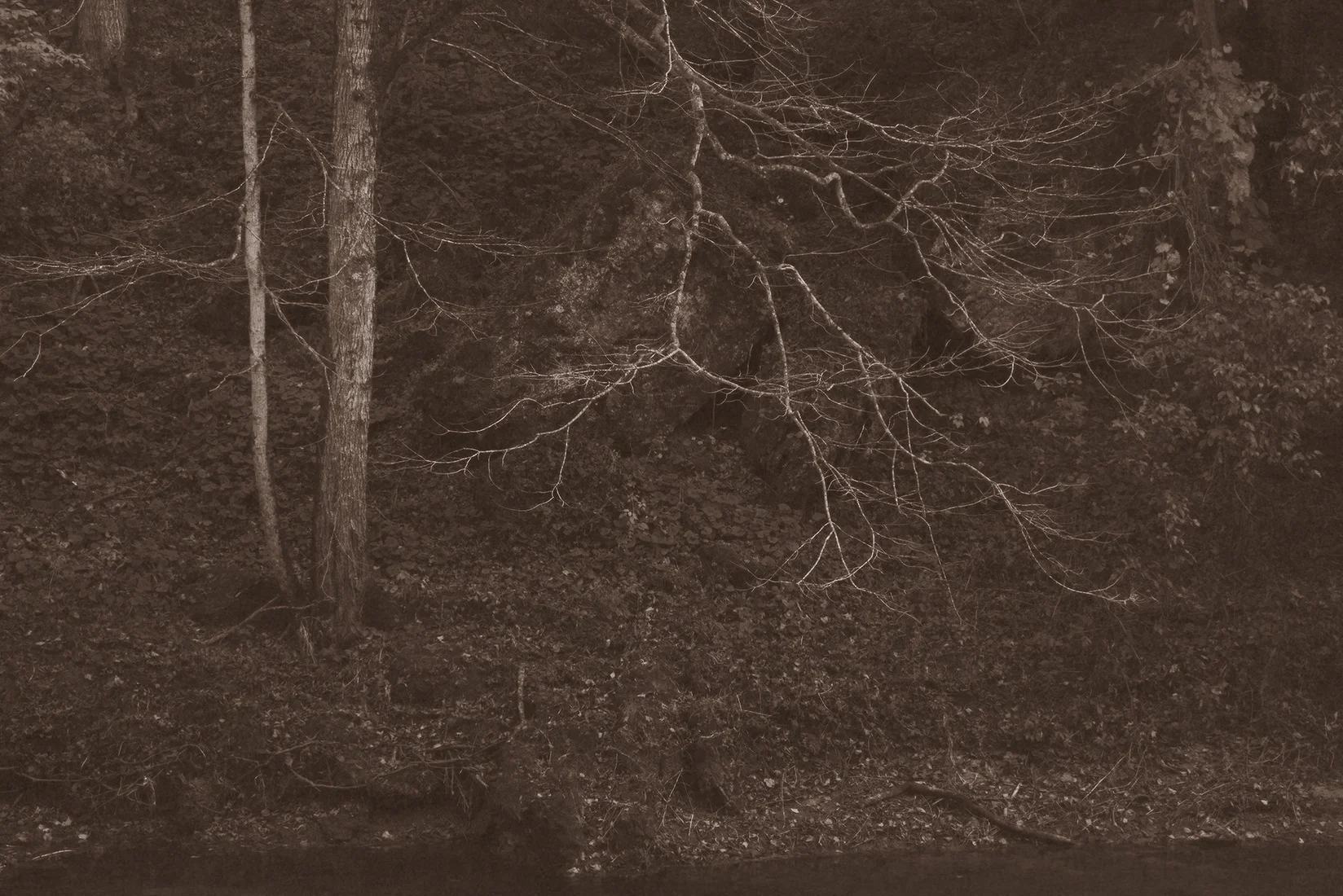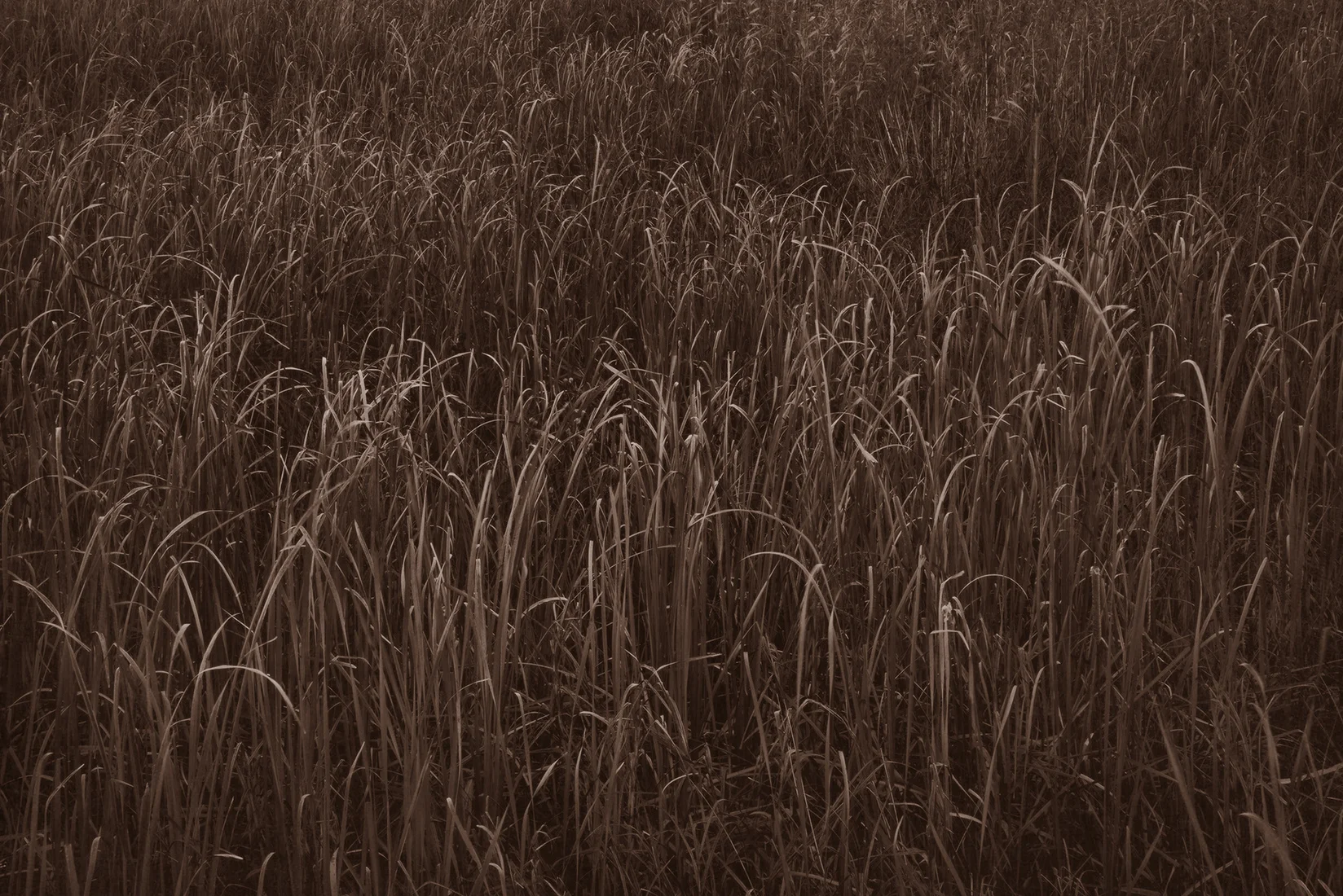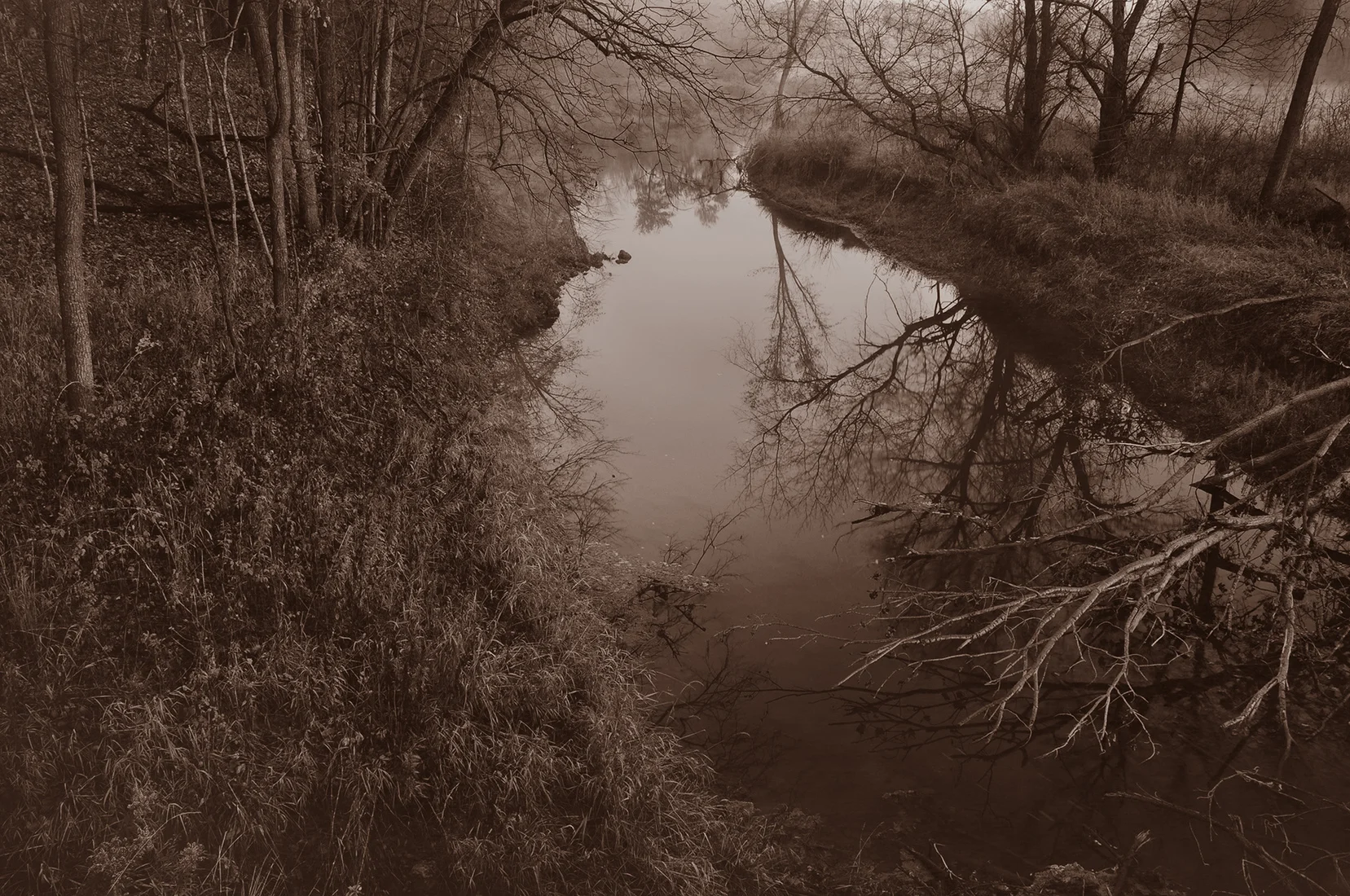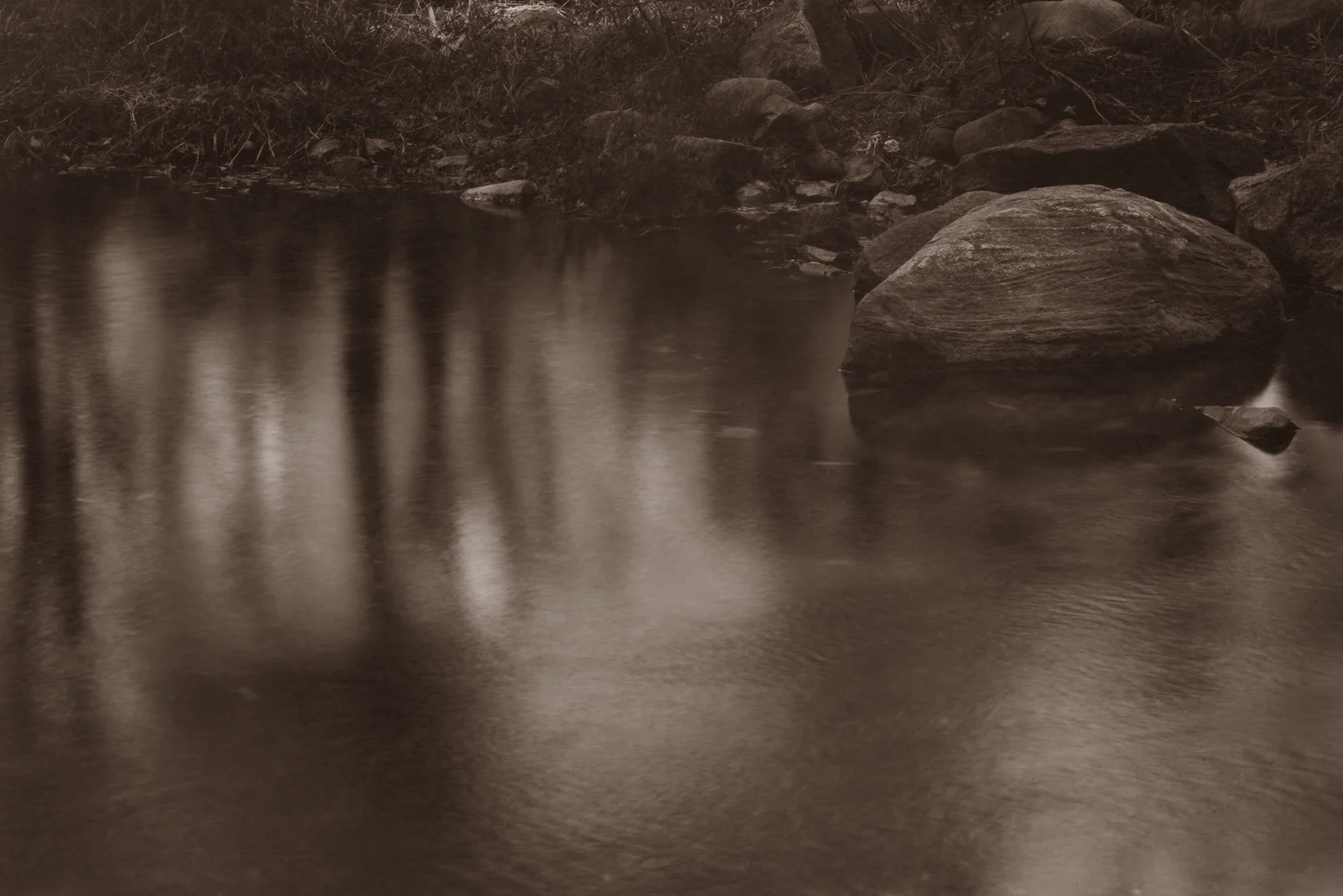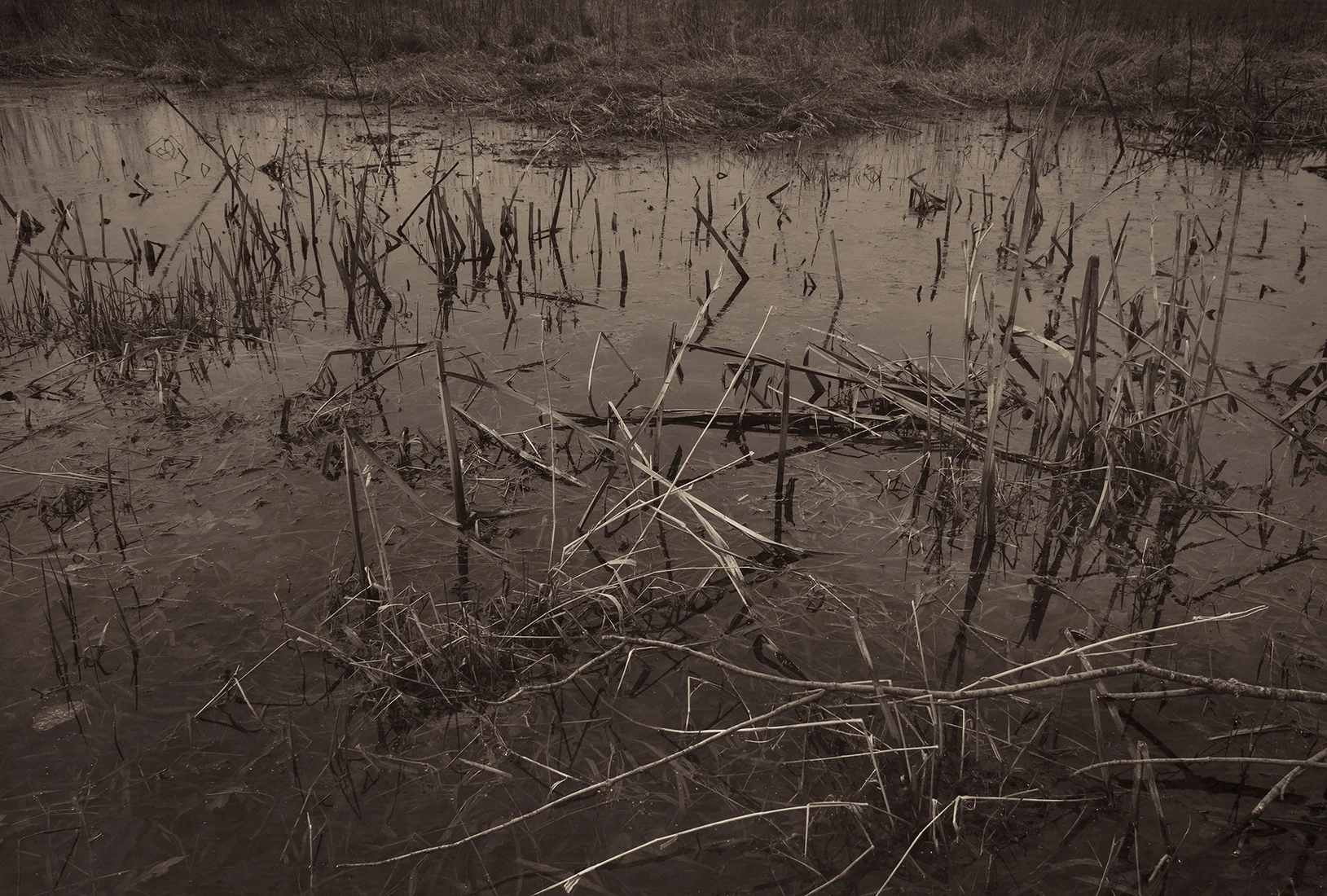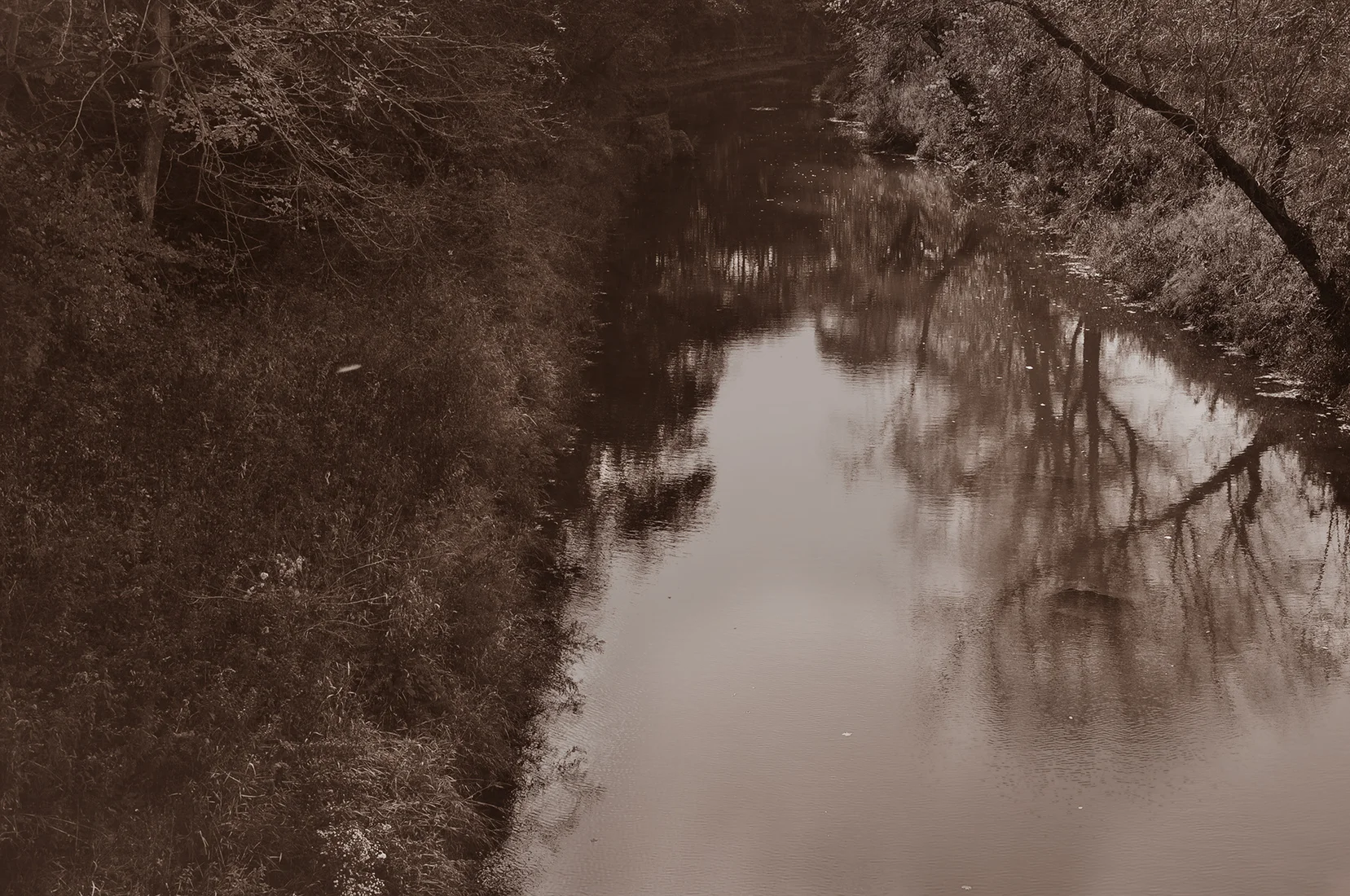The Van Dyke Brown print process was named for the resemblance of the print color to the brown oil paint named for the Flemish painter Van Dyck. This print method is based on the first iron-silver process, the argentotype, invented in 1842 by the English astronomer, Sir John Herschel. A silver nitrate solution is hand applied to archival fine art paper. When the paper is dry it is sandwiched with a negative that is the size of the image, and exposed to the sun or other UV light source. The resulting image is processed through a series of washing baths in distilled water, a toning bath to insure permanence, and a final hour long wash. The final print is then coated with a mixture of lavender oil and beeswax. Because the silver sensitizer is absorbed deeply into the paper the image has an amazing tonal range and appears to be dyed into the base material. By hybridizing the latest in digital technology to create a large negative, with the 150 year old photographic process, I am able to create photographs with the depth of detail and tonal range of large format analog photography, but with the subtle control that technology adds to the process.
Prints are available

